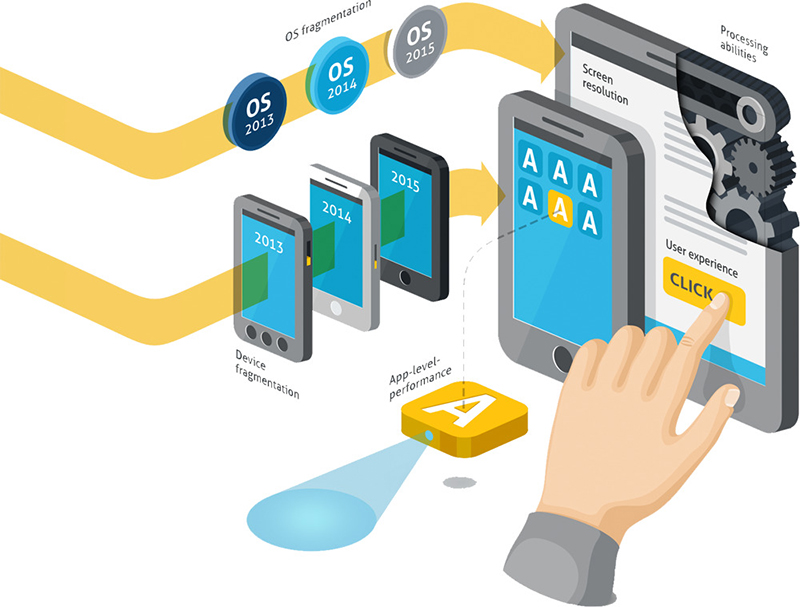Demystifying App Requirements: A Comprehensive Guide to Building Successful Applications
Understanding and effectively implementing App Requirements is crucial in building successful applications that meet user needs and expectations in app development.
Related Posts
Unlocking Seamless Gaming: The Ultimate Guide to Game Compatibility
Mastering App Compatibility: Ensuring Seamless Integration Across Devices and Platforms
1. Understanding the Importance of App Requirements
1.1 The Role of app requirements in the development process
App requirements serve as the foundation for any successful application development project. They outline the goals, functionalities, and features the app should possess to fulfill user expectations. App requirements guide the entire development lifecycle, ensuring the end product aligns with the intended vision.
Steps to writing app request. Source: Proreviewapp
1.2 How app requirements contribute to a successful end product
App requirements play a pivotal role in delivering a successful end product. They provide a roadmap for developers, designers, and stakeholders, offering a shared understanding of what the app should achieve. By outlining specific features, functionalities, and user interactions, requirements minimize ambiguity and help streamline the development process.
Furthermore, app requirements enable effective project management, helping teams set realistic timelines, allocate resources appropriately, and manage expectations. They provide a basis for testing and quality assurance, ensuring the developed app meets the desired standards and performs as intended.
Understanding and adhering to app requirements ultimately contribute to user satisfaction and the application's overall success. By addressing user needs and aligning with market demands, developers can deliver an app that fulfills its intended purpose, meets user expectations, and achieves business objectives.
2. App Requirements: Gathering and Analyzing User Requirements
2.1 Conducting user research to identify the target audience and their needs
One of the crucial steps in app development is understanding the target audience and their requirements. User research techniques, such as surveys, interviews, and usability testing, can be employed to gather valuable insights about user preferences, pain points, and expectations. By analyzing this data, developers can better understand the target audience's needs, allowing them to tailor the app to their specific requirements.
2.2 Techniques for Eliciting and documenting user requirements
Once the target audience is identified, eliciting and documenting their requirements effectively is essential. Techniques like brainstorming sessions, focus groups, and requirement workshops can be employed to involve stakeholders and capture their input.
Various formats can be used to document user requirements, such as user stories, personas, or use cases. Additionally, utilizing requirement management tools or specialized software can aid in organizing and tracking user requirements efficiently.
2.3 Analyzing and prioritizing user requirements for effective decision-making
Not all user requirements are of equal importance or feasibility. Analyzing and prioritizing these requirements is crucial to ensure efficient resource allocation and decision-making during development.
By conducting thorough user research, employing effective requirement elicitation techniques, and performing comprehensive analysis and prioritization, developers can gather and understand user requirements in a detailed manner. This understanding serves as a solid foundation for designing and developing an app that resonates with the target audience, increasing the chances of user satisfaction and app success.
3. App Requirements: Defining Functional Requirements
3.1 Identifying core functionalities and features of the app
Defining functional requirements involves identifying the core functionalities and features that the app should possess to meet user needs and fulfill its intended purpose. This requires a comprehensive understanding of the app's objectives, target audience, and market requirements by thoroughly analyzing user research data, market trends, and competitor analysis.
What Is a Functional Requirement?. Source: Youtube
3.2 Creating use cases and user stories to define specific interactions
Creating use cases and user stories can be beneficial in clarifying the functional requirements further. Use cases outline specific scenarios or interactions between the user and the app, describing the steps and actions involved. On the other hand, user stories concisely describe a specific user's requirement from the app's perspective.
By creating use cases and user stories, developers can capture the desired functionality in a more tangible and relatable manner. These tools help understand user journeys, identify potential edge cases, and define clear app behavior expectations.
3.3 Incorporating Industry best practices and standards into functional Requirements
While defining functional requirements, it is essential to consider industry best practices and standards. This ensures the app adheres to established norms, guidelines, and conventions, providing a familiar and intuitive user experience. Compliance with industry standards enhances the application's interoperability, compatibility, and future scalability.
By incorporating industry best practices, developers can benefit from proven approaches and design patterns, reducing the risk of errors or inefficiencies in the app's functionality. It also helps create a consistent and cohesive user experience across different platforms and devices.
Defining functional requirements involves identifying core functionalities, creating use cases and user stories, and incorporating industry best practices. By following these steps, developers can establish a clear vision of the app's functionality, enabling them to build an application that meets user expectations, aligns with industry standards, and delivers a seamless user experience.
4. App Requirements: Addressing Non-Functional Requirements
4.1 Considering Performance, security, and scalability requirements
In addition to functional requirements, non-functional requirements are crucial in shaping an application's overall quality and performance. Performance requirements involve response time, processing speed, and resource utilization. Security requirements address measures to protect user data, prevent unauthorized access, and ensure data integrity. Scalability requirements focus on the application's ability to handle increasing loads and accommodate future growth.
4.2 Designing for Usability, accessibility, and user experience
Non-functional requirements also encompass factors related to usability, accessibility, and user experience. Usability requirements involve designing the application in a way that is intuitive, easy to navigate, and user-friendly. Accessibility requirements ensure that the application can be used by individuals with disabilities, conforming to accessibility standards and guidelines. User experience requirements focus on providing users with a seamless and engaging experience, considering aesthetics, responsiveness, and interactivity.
By addressing these non-functional requirements, developers can create a highly usable application accessible to a broader range of users and provide an exceptional user experience. This enhances user satisfaction, increases user adoption, and improves the application's success.
4.3 Balancing non-functional requirements with functional requirements
While addressing non-functional requirements, balancing them with functional requirements is essential. Non-functional requirements complement and support the desired functionalities of the application without compromising its performance or usability. Trade-offs must be made to ensure that the application meets functional and non-functional criteria.
By considering performance, security, and scalability requirements, designing for usability, accessibility, and user experience, and striking a balance with functional requirements, developers can effectively address an application's non-functional aspects. This results in a robust, secure, user-friendly, and high-performing application that meets the needs and expectations of users while adhering to industry standards and best practices.
5. App Requirements: Collaborating with Stakeholders in Requirement Elicitation
5.1 Engaging stakeholders in the requirement gathering process
Successful requirement elicitation requires active engagement and collaboration with stakeholders. Stakeholders can include clients, end-users, domain experts, project managers, and other relevant parties. Engaging stakeholders from the beginning helps ensure that their perspectives, insights, and expectations are considered during the requirement-gathering process.
By involving stakeholders, developers gain a broader understanding of the business context, user needs, and project constraints. Stakeholders can provide valuable domain knowledge, industry insights, and specific requirements crucial for developing an application that genuinely addresses the identified needs.
5.2 Managing conflicts and resolving differing opinions among stakeholders
In requirement elicitation, conflicts and differing opinions among stakeholders are common. Establishing effective communication channels and techniques to manage conflicts and reach consensus is essential. Facilitation skills, active listening, and negotiation techniques can be employed to address conflicting viewpoints and resolve disagreements.
How to interview stakeholders about requirements? Business Analyst Course | BABOK Study Week 2. Source: Youtube
Facilitating open discussions and creating a collaborative environment encourages stakeholders to express their opinions and concerns openly. Developers can reconcile conflicting requirements and find viable solutions that satisfy multiple stakeholders by actively seeking common ground and focusing on shared objectives.
5.3 The benefits of continuous communication and feedback loops with stakeholders
Continuous communication and feedback loops with stakeholders are essential to successful requirement elicitation. Regular interactions and updates ensure stakeholders remain involved and informed throughout development. It allows for early identification of changes in requirements, evolving needs, and emerging priorities.
Developers can effectively elicit requirements that reflect all relevant parties' collective vision and needs by engaging stakeholders, managing conflicts, and maintaining continuous communication and feedback loops. This collaborative approach enhances stakeholder satisfaction, improves requirement accuracy, and sets a strong foundation for successful application development.
6. Documenting and Communicating App Requirements
6.1 Creating clear and concise requirement documents
Documenting app requirements clearly and concisely is crucial for effective communication and understanding among the development team and stakeholders. Requirement documents serve as a reference point throughout the development process and provide a shared understanding of what needs to be achieved.
Clear requirement documents should include essential components such as functional and non-functional requirements, use cases, user stories, acceptance criteria, and any specific constraints or assumptions. The language should be precise, unambiguous, and free of technical jargon, ensuring that all stakeholders can easily comprehend the requirements.
6.2 Utilizing visual aids and diagrams to enhance understanding
Visual aids and diagrams can significantly enhance the communication and comprehension of app requirements. Flowcharts, wireframes, mockups, and diagrams can visually represent the app's structure, user interfaces, and data flow. These visual representations provide a tangible and intuitive understanding of the app's functionality and user interactions.
Visual aids help bridge the gap between technical and non-technical stakeholders by visually representing complex concepts. They allow more accessible validation, feedback, and iteration during the requirement elicitation process. Additionally, visual representations can serve as valuable references for the design and development phases.
6.3 Sharing and validating requirements with the development team and stakeholders
Once app requirements are documented, sharing and validating them with the development team, and stakeholders is crucial. Collaboration tools, version control systems, and requirement management software can facilitate seamless sharing and collaboration.
Involving stakeholders in the validation process is essential to confirm that the documented requirements accurately reflect their expectations and objectives. This process helps identify gaps, ambiguities, or inconsistencies that must be addressed before proceeding with development.
By creating clear and concise requirement documents, utilizing visual aids and diagrams, and actively sharing and validating requirements with the development team and stakeholders, developers can ensure effective communication, shared understanding, and alignment on the app's requirements. This promotes a collaborative development process, reduces the risk of misinterpretation, and increases the likelihood of delivering a successful application that meets stakeholder expectations.
Conclusion
In conclusion, understanding and effectively addressing app requirements are essential to building successful applications. By following a comprehensive guide that encompasses gathering user requirements, defining functional and non-functional requirements, collaborating with stakeholders, and documenting and communicating requirements, developers can lay a solid foundation for developing applications that meet user needs, align with industry standards, and ultimately achieve success in the competitive app market.
Related Posts
Buy Positive Google Reviews from High Local Guides for Google Maps of Business
Buy Android app reviews and ratings on Google Play Store from real users at the lowest price
Thanks for reading
Source: Buy app reviews
Demystifying App Requirements: A Comprehensive Guide to Building Successful Applications
- 1. Understanding the Importance of App Requirements
- 2. App Requirements: Gathering and Analyzing User Requirements
- 3. App Requirements: Defining Functional Requirements
- 4. App Requirements: Addressing Non-Functional Requirements
- 5. App Requirements: Collaborating with Stakeholders in Requirement Elicitation
- 6. Documenting and Communicating App Requirements
- Conclusion








Leave a Reply
Your e-mail address will not be published. Required fields are marked *